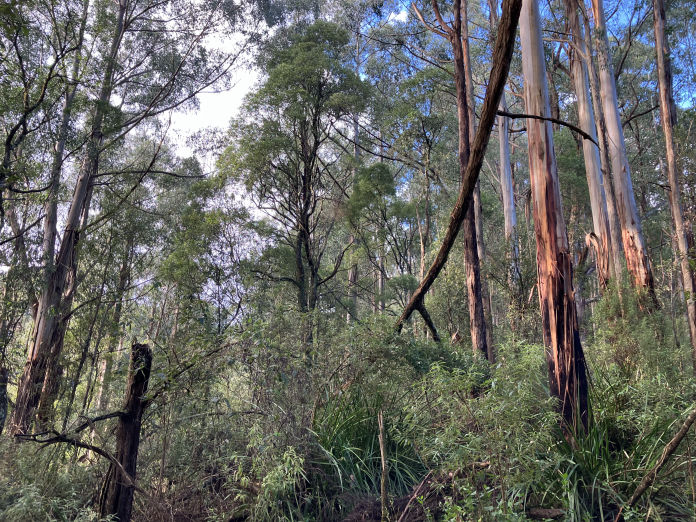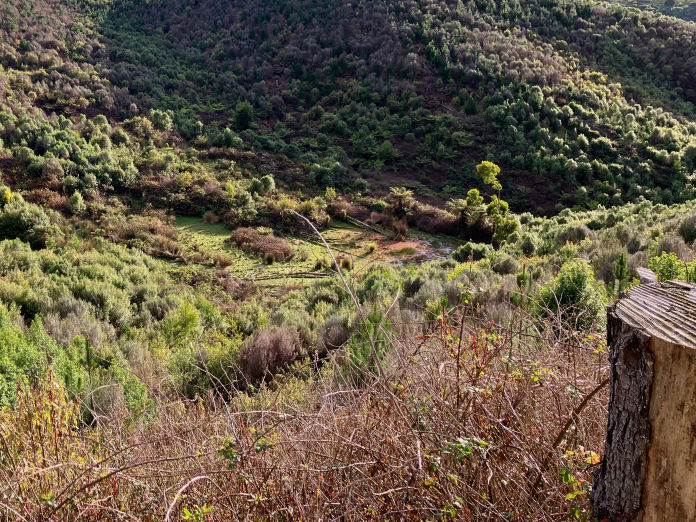Rethinking Pine Plantations in Conservation Areas

HVP have mapped parts of our Crown land (above) as plantation. It contains mixed species of different ages, has a mid-story and great ground cover...overall it is great habitat for Koala, Lyrebirds, Gang-gangs and Pilotbirds.
South Gippsland Council consultant ecologist report states it is "indistinguishable" from native forest. We are advocating for these areas on our Crown land to be preserved, not cleared for pines.
HVP may have a license to use this Crown land, but they won't have a social license if they don't look after out threatened species in line with community expectations.

HVP are planning to plant pines as close as 20m from these rainforest lined creeks. The rainforest and species that depend on it will be impacted by these changes.
We are asking HVP to follow our government scientists advice and establish a 200m buffer.
Our rainforest refuges are at risk of extinction if pines are planted so close to them.
Pine plantations this close to the Tarwin River will effect the water quality that the people of Dumbalk and Meeniyan rely on for their water.
Large native species buffer zones are the gold standard for biodiversity and water quality.

Above: Pine plantation on Crown land in Turtons Creek.
This land is sick, full of weeds and the creeks are full of sediment and unsuitable habitat for our native species.
HVP spray a combination of toxic chemicals that make their way into the catchment. The photo above is taken in Turton's plantation which makes up nearly 10% of Foster's water supply catchment.
We are concerned that without adequate buffer zones the high conservation values of our Crown land will be lost and end up like this uncared for Crown land above.